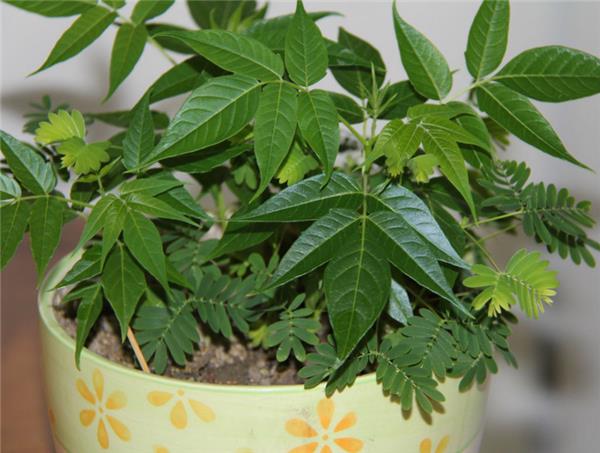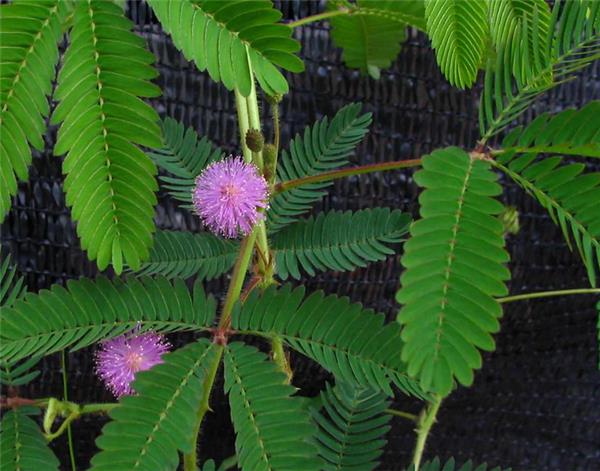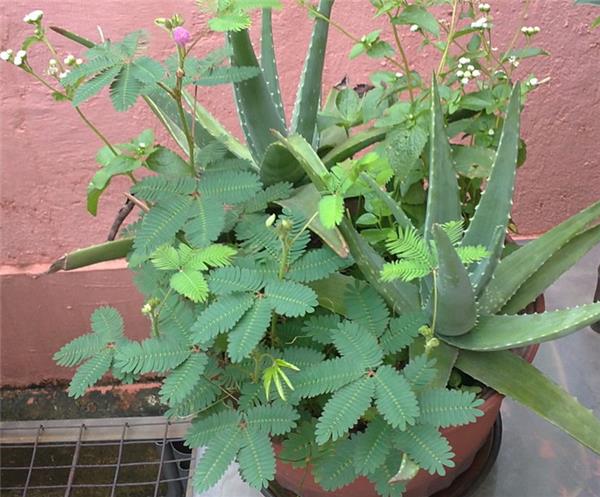Analysis of the function of mimosa
If the leaves of mimosa are touched, watered or in case of a typhoon, they will curl up as if they are bowing to people. They are polite plants. What we are going to introduce to you today is the function of mimosa.

The function of mimosa
1. Mimosa can predict the weather.
Mimosa is a wonderful plant that can predict changes in the weather. If you touch it with your hand, its leaves close quickly and open slowly, indicating that the weather will clear up; if you touch mimosa, its leaves contract slowly, droop slowly, or even reopen a little bit, this means that the weather will change from sunny to overcast or it is going to rain.
The speed of the opening and closing of mimosa leaves can foretell the weather, mainly because in the neck of mimosa leaves, there is a small drum-shaped parenchyma tissue-leaf mattress, which is filled with water. When you touch the mimosa leaf with your hand, as soon as the leaf vibrates, the water in the lower cells of the leaf mattress immediately flows upward to both sides, so that the lower part of the mattress shrivels down, while the upper part bulges up, the petiole droops and the leaf closes. Therefore, the closure and opening of leaves are caused by the swelling and pressure of leaf mattresses. The expansion and pressure of the leaf mattress is closely related to the humidity in the air. When the air humidity is very small, the expansion and pressure effect of the leaf mattress is obvious, and the closing and opening speed of the leaf is fast; when the air humidity is very high, the opening and closing speed of the leaf is slow. Therefore, the speed of opening and closing of mimosa leaves indirectly reflects the humidity in the air and can be used as a reference for weather forecast.

2. It can also predict earthquakes.
Mimosa can predict earthquakes. According to Turkish seismologist Erjiang, a few hours before a strong earthquake, the leaves of mimosa, which are sensitive to the outside world, suddenly shrink and then wither. In earthquake-prone Japan, scientists have found that under normal circumstances, mimosa leaves open during the day and close at night. If the leaves of mimosa close during the day and open at night, it is a sign of an earthquake. For example, at 7: 00 a.m. on January 11, 1938, the mimosa began to open, but at 10:00, all the leaves suddenly closed, and sure enough, a strong earthquake occurred on the 13th. Members of the earthquake Club of Japan in 1976 observed the abnormal closure of mimosa leaves many times, resulting in an earthquake.

3. Mimosa has a special ornamental effect.
Mimosa plant shape scattered, feather leaves slender and beautiful, its leaves are closed at a touch; mimosa flowers are many and beautiful, charming, giving people the impression of weak and elegant. It can be planted in the corner of the courtyard or potted in the window. When giving flowers, gently cover the potted plants with pink tulle and tie them with pink ribbons and knots. It would be more interesting if you could adorn it with pink mohair balls.

4. The medicinal value of mimosa is not cheap.
Mimosa is also a medicine. Summer and autumn harvest, to clean weeds, wash, cut, dry or fresh use. Taking or frying mimosa root with wine can treat rheumatism, neurasthenia, insomnia, etc., and stew with lean pork can treat eye fever, swelling, hepatitis and nephritis. The fresh products of leaves can be mashed, can be applied to treat swelling and pain and herpes zoster, quite effective in relieving pain and swelling, clearing heat and diuresis, resolving phlegm and cough, relieving pain, detoxification, removing blood stasis, hemostasis, convergence and other effects, for colds, children with high fever, acute conjunctivitis, bronchitis, gastritis, enteritis, urinary calculi, malaria, neurasthenia; external treatment of swelling and pain, sores, hemoptysis, herpes zoster.
Related
- Wuhan Hospital Iron Tree Blooming Result Was Instantly Frightened by the Gardener Master
- Which variety of camellia is the most fragrant and best? Which one do you like best?
- What is the small blue coat, the breeding methods and matters needing attention of the succulent plant
- Dormancy time and maintenance management of succulent plants during dormancy
- Minas succulent how to raise, Minas succulent plant pictures
- What are the varieties of winter succulent plants
- How to raise succulent plants in twelve rolls? let's take a look at some experience of breeding twelve rolls.
- Attention should be paid to water control for succulent plants during dormant period (winter and summer)
- Watering experience of twelve rolls of succulent plants
- Techniques for fertilizing succulent plants. An article will let you know how to fertilize succulent plants.



